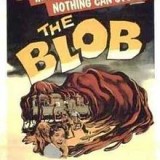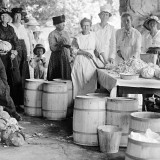
Homegrown Revolution chanced upon an amazing book at the library, Stephen Harrod Buhner’s Sacred and Herbal Healing Beers that has inspired ambitious plans of a fall and winter season of beer making (things are too little too hot around right now for fermentation). What separates Buhner’s book from both the geeked-out world of middle-aged home brew aficionados on the one side and the Budweiser frogs on the down-market other is his emphasis on the ancient and sacred elements of beer making which used to be, he claims, the duty of women, not men.
His chapter, “Psychotropic and Highly Inebriating Beers” contains a number of recipes, including one making use of the mysterious mandrake plant, a member of the nightshade family and popularized lately in a certain series of books about a wizard school (Homegrown Revolution suffered through the first film based on these kid’s books on a transatlantic flight a few years ago, finally falling asleep during an endless video game inspired broom chase scene).
Apparently wherever it appears in the world, mandrake (Atropa mandragora) has always inspired unusual beliefs. Buhner says,
Though all indigenous cultures know that plants can speak with humankind, mandrake is almost the only plant from indigenous European practice about which this belief is still extant. Throughout its Christian European history, it has been believed that when mandrake was harvested, the root would scream, and that the sound would drive the harvester mad.
The roots are said to resemble a human with the top of the plant representing the head as in the illustration above. The plant belongs to the nightshade family and has been used over time, as a purgative, an aphrodisiac, treatment for rheumatism, a means to expel demons among countless other purposes. Pliny used it as an anesthetic, and Buhner offers a beer recipe using a 1/2 once of the dried root. Seeds for mandrake, an endangered plant in many places, are available from Horizon Herbs, a company trying to revive cultivation of the plant.
This summer season we’re surrounded by nightshade plants, tomatoes, ground cherries and eggplant. These common nightshade family members, as well as mandrake and the datura that the local Native Americans used for there spirit journeys, have a strange relationship to human culture, at once edible, sometimes poisonous, sometimes psychotropic. We think we can almost hear them talk.





for information about fresh Mandrake seeds: http://www.dudaim.org
shipping worldwide!
Hi every one
for information on seeds roots planting and cultivating the mandrake mandragora officinarum, try mels plants, lots of pictures and friendly advice the address is
http://www.freewebs.com/melsplantsandseeds/
hope that is some help
Alex